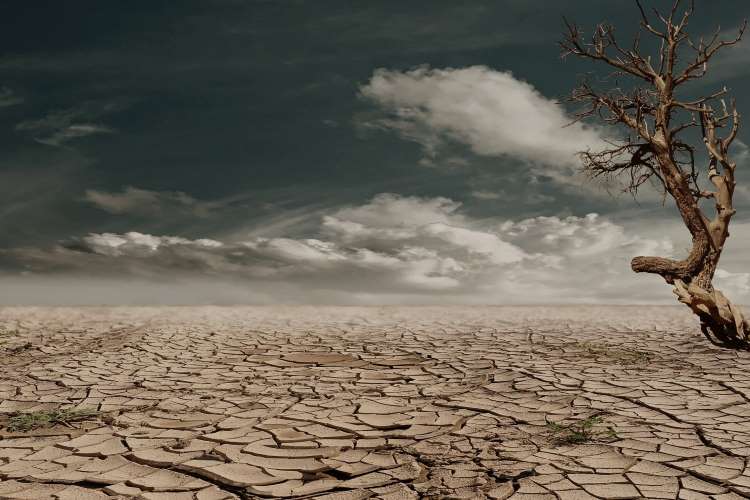An annual review of global climate change events says sea levels, ocean heat content and greenhouse gas concentrations peaked in 2021. The latest annual ‘State of the Climate’ report released on Wednesday by the US Federal agency National Oceanic and Atmospheric Administration shows that long-term warming trends continue unabated despite temporary cooler weather phenomena like La Nina.
More than 530 scientists in over 60 countries contribute to the annual review of the world’s climate led by NOAA’s National Centers for Environmental Information. It is considered the most comprehensive report on climate indicators, weather events and data produced by monitoring stations located across the globe and in space.
The report has some compelling evidence to show that the of climate change is not slowing. Extreme weather events such as cyclones, floods, droughts, and heat waves have already brought climate change closer home for most of the world, the report shows. The report also contains some good news – sea surface temperatures in the Pacific was lower because of the La Nina, helping to bring down temperatures in different parts of the world. And the South Pole experienced the lowest temperature on record.
The State of the Climate report is peer-reviewed and published annually along with the Bulletin of the American Meteorological Society. Here are the major takeaways from the report.
READ I Explained: America’s Inflation Reduction Act 2022 is more about environment
Climate change, global warming unabated
Close to a third of the world experienced droughts in August 2021. East Africa had its lowest rainfall, marking the third failed rainy season on a trot. The global warming trend continued for the 10th year running. The global surface temperatures were 0.5 degrees higher than the 10-year average up to 2020. This puts 2021 in the league of the six warmest years since recording started in late 1800s. China and New Zealand experienced their warmest years on record.
The earth experienced seven warmest years on record. Sea levels rose by 3.8 inches since 1993, and by two-tenths of an inch since 2020. Scientists say every inch of sea level increase raises the risk of flooding along the Atlantic and Gulf coasts.
Europe recorded the second-hottest summer with temperatures soaring to 119.8 degrees, while Spain experienced the lowest temperature at minus 29.4 degrees at Clot del Tuc de la Llança in the Pyrenees.
Ocean heat, sea level touch new record
The ocean absorbs the excess energy trapped in the atmosphere by greenhouse gases. Global ocean heat content has touched new records last year. Sea levels continued to rise for the 10th year running at about 3.8 inches above the 1993 average.
Sea surface temperatures were brought down by La Niña conditions that began to influence climate in mid-2020. The sea surface temperature last year was lower than in 2019 and 2020, but 57% of the sea surface had at least one heatwave in the year.
The year was the warmest on record for New Zealand and the coolest since 2012 for Australia. Antarctica saw the coldest winter on record at the South Pole. The Arctic saw the coolest year since 2013, but the 13th warmest year on record.
Greenhouse gas levels rising: The concentrations of carbon dioxide, methane and nitrous oxide touched record levels in 2021. The average atmospheric carbon dioxide concentration in 2021 was 414.7 parts per million, 2.3 ppm higher than 2020 levels. This is also the highest recorded level of CO2, and also the highest in the last million years according to paleoclimatic records.
The average atmospheric methane concentration was also the highest on record, with an increase of 18 parts per billion in a year. The methane levels have increase in methane has significantly accelerated since 2014. The annual rise of 1.3 ppb for nitrous oxide contributed to the annual average atmospheric concentration of 334.3 ppb.
Tropics experienced above average cyclone activity: The year 2021 saw 97 named tropical storms compared with the 1991–2020 average of 87 and seven of them reached Category 5 intensity. There were 21 names storms in the North Atlantic hurricane basin, the third highest after 2020 (30) and 2005 (28). At $75 billion in damage, Category 4 Hurricane Ida became the costliest US disaster of 2021 and the fifth costliest since 1980. Super Typhoon Rai caused $1 billion in damages and more than 400 deaths in the Philippines.

